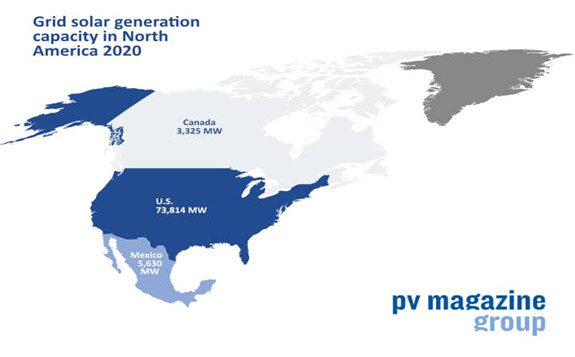A modeling exercise carried out to determine the best path to a low carbon energy system across North America has estimated 34 GW of solar could be required in Canada by mid-century, rising to 51 GW with extensive electrification of heating and transport.

Industry body the Canadian Renewable Energy Association (CanREA) has welcomed the findings of the North American Renewable Integration Study (NARIS), and pointed out the government has raised its climate change ambition since the modeling exercise was started, three years ago.
With the NARIS study – carried out by Natural Resources Canada, the United States Department of Energy and the Secretaría de Energía de México – having made its solar prediction based on an 80% reduction in carbon emissions across the three nations' energy systems by mid century, CanREA has pointed out Ottawa and the U.S. have since pledged to attain net zero economies by 2050, with Canada aiming to eliminate carbon from its energy system by that point and the U.S. promising to do so by 2035.
The NARIS findings modeled by the U.S. National Renewable Energy Laboratory predicted the route to an 80% carbon free energy system in Canada would require 7-32 GW of rooftop solar, depending on the scenario mapped in an exercise which examined four broad outcomes plus 38 variations.
The Canadian industry body, which welcomed the findings of the study on its website yesterday, used the occasion to call on the federal government to ramp up the roll-out of solar and wind generation capacity and improve electricity network links between the nation's provinces.